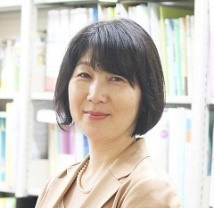The understanding of music through the body has been widely used as a teaching method both domestically and internationally. On this site, we have trimmed movements that clearly illustrate the roots of music and the characteristics of various genres. Educators, who are familiar with child development, have extracted minimal movements from the guidance of dance experts to create videos that children can imitate and play with. By moving their bodies, children can experience the qualities of beats and rhythms that cannot be represented by sheet music.
Japanese Folk Songs for Children
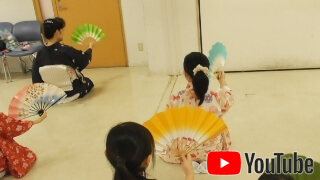
No.1 Fan Practice“Hiraita Hiraita”
One distinctive feature of Japanese culture is the frequent use of props in dance. In traditional Japanese dance, it is common to see bows performed both before and after the performance.
When the children practice opening and closing the fans, they hold them parallel to the floor and move them while gradually changing the speed. Let’s try imitating the hand movements and gestures (in Japanese culture, a set of movements is referred to as syosa).
In Japanese traditional dance, fan movements are used to represent elements such as the "sun" or "wind
Japanese Folk Songs for Children
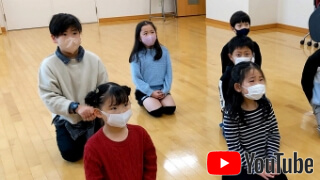
No.2 Elementary School Students' Challenges
Children from grades 1 to 4, who had never learned Japanese folk dance before,
challenged themselves with fan practice. They were able to recite the chants that guide the opening and closing of the fan in the correct rhythm.
But the fans used in Japanese traditional dance are stiff, making it difficult to open and close them without practice. However, upon seeing the beautiful patterns on the fans, the children exclaimed, "So pretty!" and "I want to try!"
All the children willingly and enthusiastically took on the challenge.
Nursery Rhymes
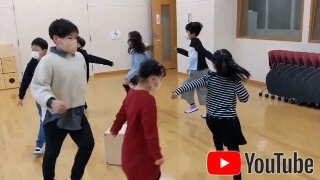
No.3 “Here We Go Round The Mulberry Bush”
Using Nursery Rhymes as our teaching material, we conducted a music class for upper elementary students. Since older students are not only interested in just playing, we encouraged them to learn about the origins of the songs, devise creative ways to play, and compare different cultures.
In the class, the students were divided into teams: one team introduced recommended play songs, another showcased the charm of Japanese nursery rhymes, a third presented Japanese songs (shōka) from the Meiji period, and the fourth introduced British nursery rhymes.
Nursery Rhymes
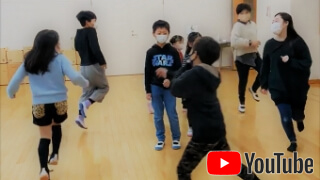
No.4 “Do you know the Muffin Man”
During this period, to prevent the spread of COVID-19, we modified the way the game was played. One child in the circle was designated as the leader, while the other children skipped around that child. At the end of the song, the child in the circle would point to any friend of their choosing. The chosen friend would join in the center, and the song would start again. At the end of the song, the two children in the circle would each nominate another friend, increasing the group to four. When the game was played as a question-and-answer song, the children in the circle sang the response lyrics.
Asian fork songs
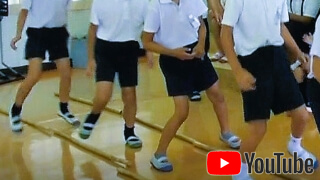
No.5“Tinikling”
This is a traditional dance from the Philippines. In Japan, the title of the song is featured in second-grade textbooks. When practicing the steps, it is both efficient and fun to place a bamboo pole and have everyone line up together. Some children find it fun and thrilling, while others are scared. You can substitute the bamboo with two strips of vinyl tape or enjoy the three-beat rhythm without moving the bamboo. Once the students have mastered the steps, you can recruit volunteers to try the version that involves moving the bamboo.
Asian fork songs
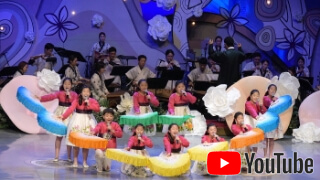
No.6“Sky wind”
I watched the National Gugak Institute's children's gugak song competition held in South Korea in 2017. This photo shows the children who won the gold prize.
Unlike Chinese and Japanese music, which often follows duple meter rhythms, the music of the Korean Peninsula frequently divides a measure or a beat into three parts. These rhythmic patterns and their combinations are called Jangdan (장단). There were both gentle and dynamic Jangdan in the performances.
Latin Music
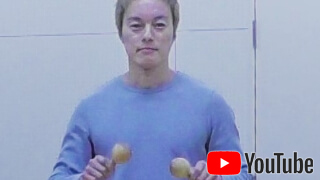
No.7 Salsa steps
Let's experience the rhythm of salsa, which originated in Cuba.
It's good to dance while counting "1, 2, stop."
In Japan, even elementary school students understand hip-hop and rap, but salsa is not very well known
Latin Music
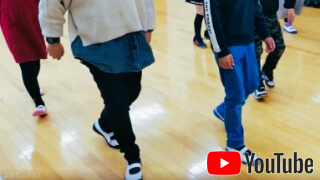
No.8 Elementary School Students' Challenges
In public education, I want to go beyond just imitating dances of favorite artists and approach the origins and cultures of diverse rhythms.
This video shows elementary school students trying salsa steps for the first time with AI-generated music.
In situations where students are seated and unable to dance, accompanying the rhythm with maracas playing eighth notes is also a good alternative.
First Time with Hip-Hop
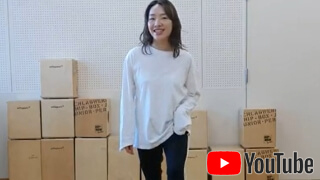
No.9 "Running Man" from an anterior view
Let's try the "Running Man" step, which looks like you're running.
Watch Ms. Reina's movements and learn the footwork in Step 1.
In Step 2, challenge yourself to make your movements smoother.
First Time with Hip-Hop
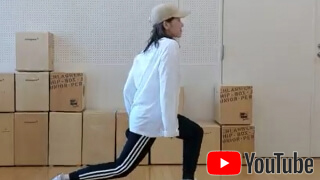
No10 "Running Man" from the side view
Let's try it while watching from the side.
The key is to slide the back foot in two steps.
Once you're comfortable with the step, try adding arm and hand movements.
The music is Xprinkles by Hellberg & Tobu.
First Time with Hip-Hop
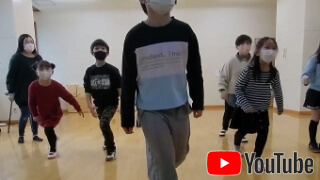
No11 Elementary School Students' Challenges
This short video shows an elementary school student trying the "Running Man" dance step for the first time.
In Japanese elementary schools, dance is taught as part of physical education.
However, rather than focusing solely on enhancing physical abilities, it would be ideal to incorporate dance as an opportunity to experience diverse types of music.
A famous song of British origin.
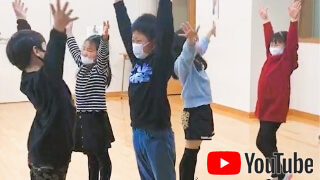
No.12 “We Wish You a Merry Christmas”
This is a choreography we enjoyed with children during the Christmas season.
We expressed the rising quality of the three-beat rhythm’s center of gravity by changing the height of our touches.
When the energy reached its peak, we joined hands or elbows with our friends.
To express happiness, we finished with a joyful "banzai" gesture.
A famous song of British origin.
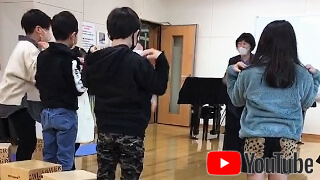
No.13 “Head, Shoulders, Knees & Toes"
“Head, Shoulders, Knees & Toes" is well known as a play song in Japan.
Being able to perform the movements even at a fast speed gives elementary school students a sense of accomplishment.
The original song is said to have been a cheerful tune sung while drinking alcohol.
I used this song to invite elementary school students to the university and play together. Later, I received a video of them playing with their siblings at home.
European dance steps
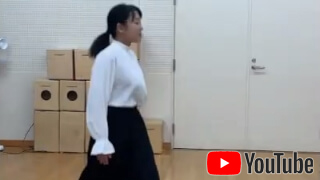
No.14 “Happy Birthday to you”
Professor Eiko Nakadate, an expert in folk dances, says that the steps of this piece are a variation of the Varsovienne step, which originates from Poland.
Through these movements, let's experience the feeling of upbeat motion and musical phrasing.
European dance steps
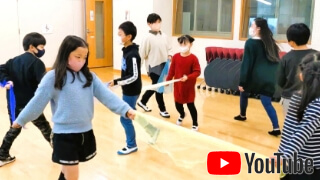
No.15 Farandole steps
The Farandole is a dance step that originates from southern France.
Dancers connect by holding hands or handkerchiefs, creating a flowing path led by the front dancer.
In this video, we performed the steps while holding the ends of rhythmic scarves.
It is recommended for entrances at school performances, such as kindergarten and school art presentations.
Dance is said to be one of the oldest forms of human art.
Dance ethnologist and dancer Tomoko Yanagida expresses the greatness of African dance as follows:
"It is the very wisdom that allows people to live healthily and harmoniously with their community, nature, and the unseen world."
I was introduced to movements that anyone can imitate, taken from dances performed by people of all ages, from children to the elderly. It is okay if it cannot be perfectly imitated. In Japan, Bon Odori is like that.
I also find it wonderful how the connection to nature and daily life can be seen through dance.
The rhythms of West African dance
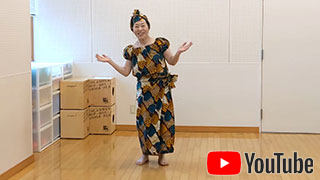
No16 "Ekonkon"
"Ekonkon" is a dance of the Jola people, who live in the southern region of Senegal. The tradition of accompanying celebratory rituals with music and dance is deeply rooted in human history. Ekonkon is also danced during occasions such as the birth of a baby and weddings.
In the video, Professor Yanagida explains that the first movement represents washing hands, dressing up, and dispelling negative energy. Once you master the hand movements, try adding the footwork as well.
The second movement symbolizes harvesting, with the hands moving as if picking something up.
The third movement mimics cutting grass, stepping diagonally while using hand gestures to represent the cutting motion.
The fourth movement involves rubbing the arms together, representing the act of washing clothes.
Spreading the hands represents the moment of saying, "The laundry is done!"
Next is a movement expressing "I don’t want to hear bad news," and the final dance move symbolizes "removing bad energy.
The rhythms of West African dance
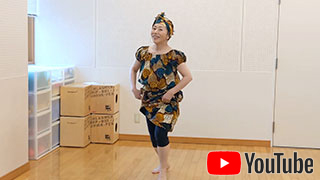
No17 "Lengin"
"Lengin" is a dance of the Mandingo people, characterized by movements that resemble the flapping of a bird’s wings.
In Japan, we have family crests that symbolize households and school emblems that represent institutions. But in Africa, where each ethnic group has its own symbolic dance, the culture feels incredibly active and dynamic.
The sequence of movements is humorous, and the dance has a slightly high level of difficulty.
The rhythms of West African dance
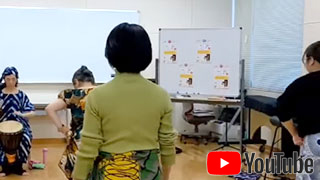
No18 "Kakilambe"
We held a workshop where participants danced African dance to live djembe drumming.
Kakilambe was originally considered a deity that heals physical and mental illnesses, but in recent years, it has been regarded as a god of agriculture.
From the movements of the leading dancer, Tomoko Yanagita, you can feel a strong life force as she steps firmly on the earth.
Let’s all engage our core, bounce to the beat, and dance together!
The rhythms of West African dance
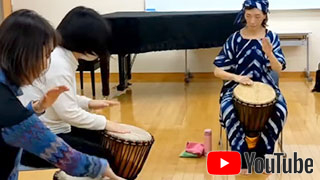
No19 djembe
In the workshop, we also had the opportunity to experience playing the djembe.
In Japan,the drum is often referred to as "jambe."
The djembe player, Taduko Enomoto, taught us how to produce high, middle, and low tones.
When learning the playing techniques, we used onomatopoeic sounds such as "Gun," "Godo," and "Pa" to remember them. Similarly, when learning rhythms on the Japanese koto, onomatopoeic sounds like "Kararin" and "Tsuntsun" are used. This method is called "shōga" (唱歌).
Djembe player David Sylla's atelier
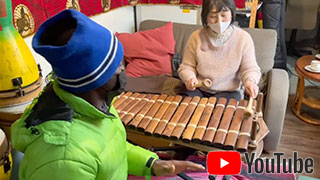
No20 balafon
The balafon has rows of round gourds attached beneath its wooden keys as resonators. Thin plastic membranes are stretched over holes in the gourds. It produces a very gentle tone, and you can hear the subtle buzzing sound created by the vibrating membranes as the notes resonate.
David runs a djembe class in Yamaguchi Prefecture and also offers djembe repair services.
Djembe player David Sylla's atelier
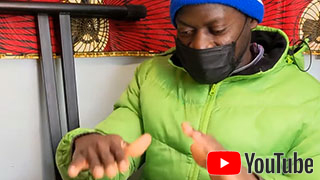
No21 The rhythm of "Kuku"
Kuku is one of the most famous West African rhythms and is often played at traditional events such as ceremonies and festivals. The rhythm of "Kuku" is easy for beginners to imitate.
The drums seem to be chatting with each other, saying "Kaggungodo Kakkungodo."
For an authentic Kuku performance, you can check out David’s wife, Yoko, who has uploaded videos on YouTube.
In 2023, Okinawan students told me that in Okinawa, there is a tradition where children parade through the streets while dancing as part of a community event. It is rare to find regions where dance culture is so deeply rooted in children's daily lives.
Enjoy the performances by Okinawan-born sanshin instructor Morihiro Nakamura and our university's specially appointed professor Kenji Kiriki, as well as a percussion and hand-play lecture by Okinawan dance artist Kiyoko Osaki.
Sanshin, Sanba, Ryukyuan Hand Play
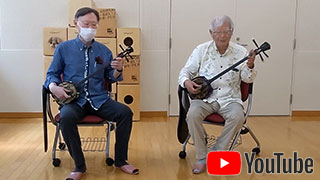
No22 "Tinsagu nu Hana"(Impatiens)
"Tinsagu nu Hana" refers to the balsam flower (Impatiens).
In Okinawa, there was once a tradition of applying the flower’s juice to dye one’s nails. The lyrics use this as a metaphor, conveying the message to deeply engrain parental teachings into one's heart, just as the dye stains the nails.
In the past, the song was included in school textbooks, but in recent years, instrumental recordings have been introduced instead.
Enjoy the swaying, expansive singing style and rich resonance of this beautiful piece.
Sanshin, Sanba, Ryukyuan Hand Play
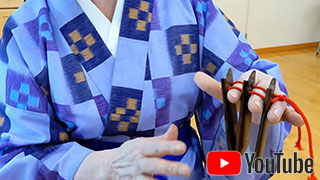
No23 “Sanba 三板”
The Brazilian dance Samba has a similar pronunciation, but Sanba is the name of a musical instrument.
Since the post-war period, castanets have been a standard instrument in Japanese elementary schools. However, unfortunately, few schools own Sanba.
When I conduct outreach lessons at public elementary schools, I let children play Sanba along with Okinawan folk songs and teach them hand dances.
Sanshin, Sanba, Ryukyuan Hand Play
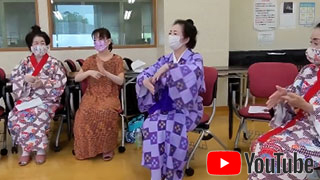
No.24 "Akata Sundunchi" by the Hiroshima Okinawa Kenjinkai
The Hiroshima Okinawa Kenjinkai is an organization of Okinawan natives living in Hiroshima.
"Akata Sundunchi" is sung during the festival in Akata Town, Shuri, Naha City.
The lyrics express a wish for a peaceful world, reflecting Okinawa's unique Miruku (弥勒,Maitreya) faith.
During an outreach lesson at an elementary school, I heard an episode about an Okinawan-born student who already knew this song because their grandfather used to sing it during New Year's celebrations. This made me realize that the song has been passed down across generations.
The lyrics include words with clear meanings, such as "ear" and "elbow", as well as words with unclear meanings that have various interpretations.
With its rich chant-like phrases and value as a hand-dance song, this piece serves as an excellent educational material.

